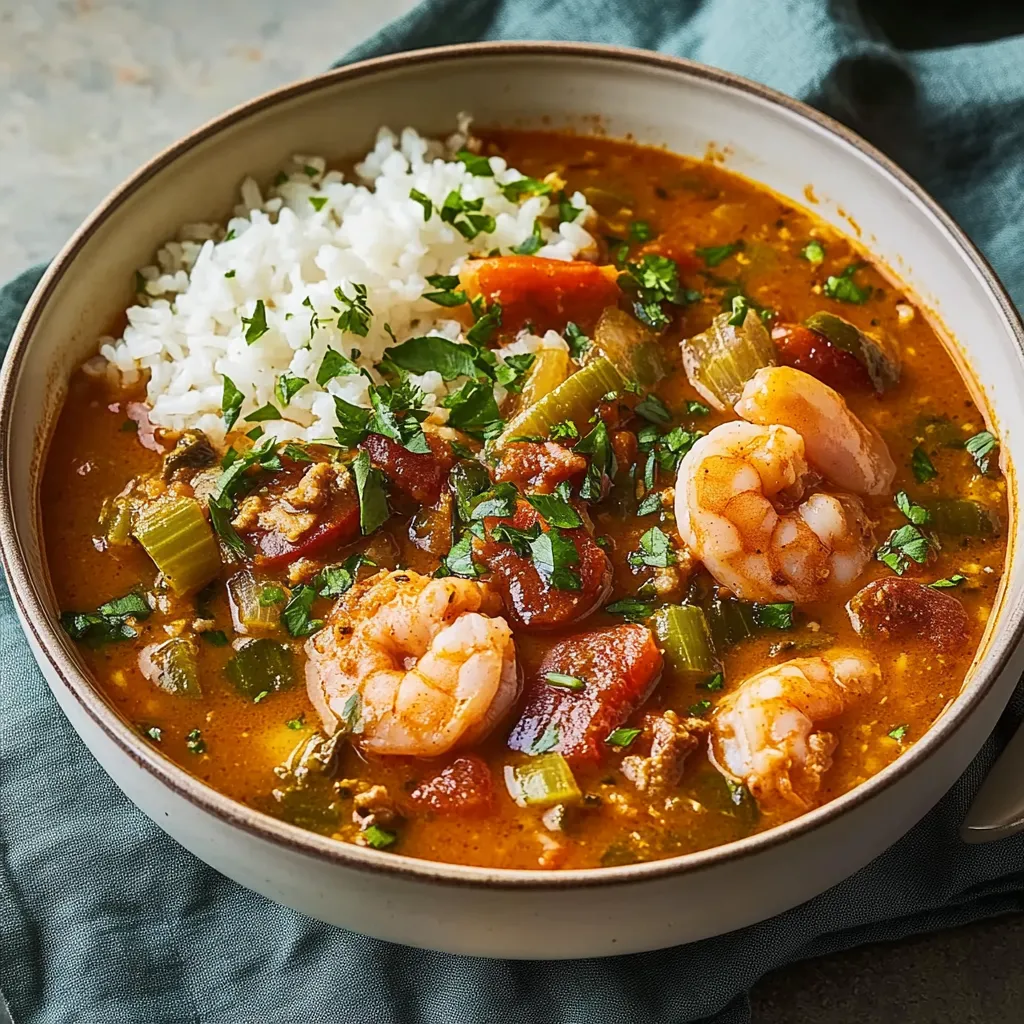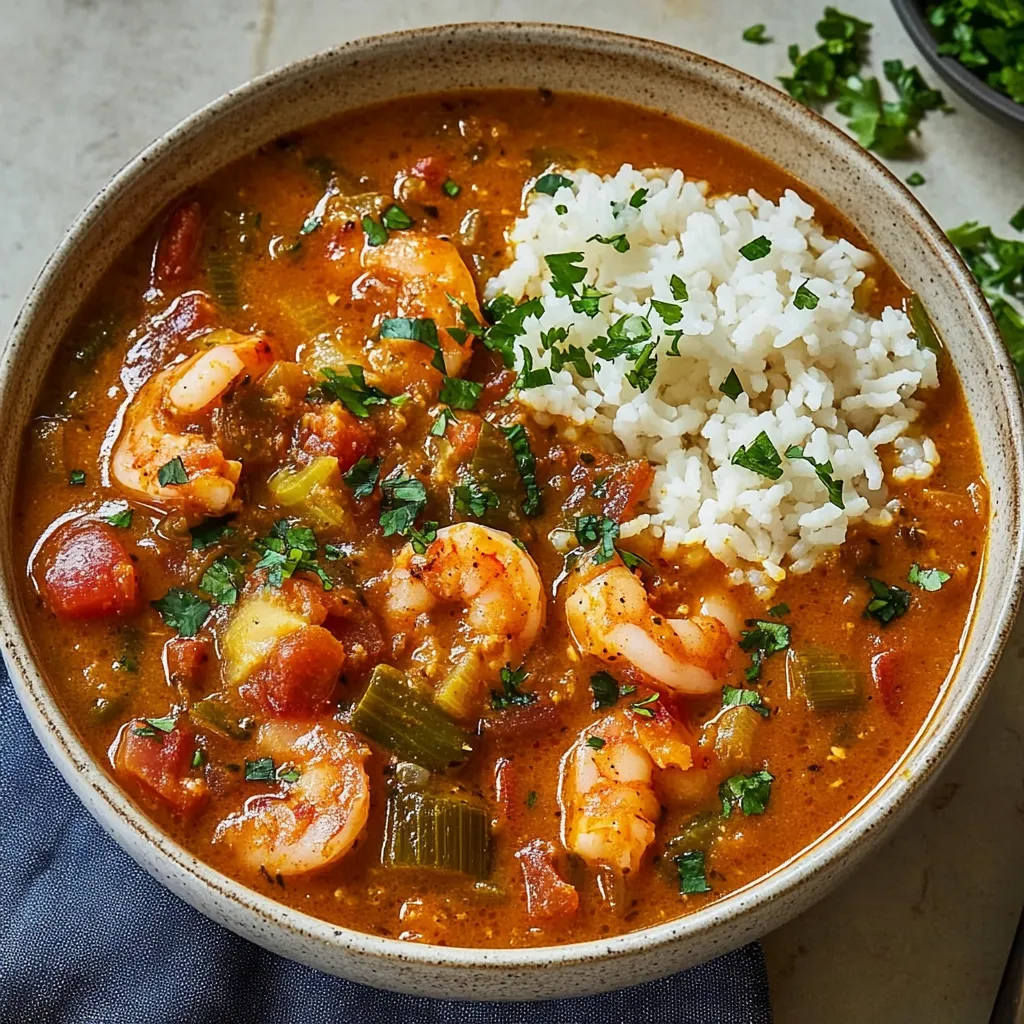 Pin it
Pin it
Down in New Orleans, gumbo goes way beyond a set of instructions – it's a tale that builds up with every flavorful spoonful, whispering stories of family customs and deep Louisiana roots. This down-home Creole dish, handed through families and tweaked during countless weekend gatherings, begins with that crucial dark roux that holds everything together. The deep brown color of that base, the soft mix of chopped veggies, and how the seafood plays with the sausage makes something that's fancy yet comforting at the same time.
I first learned about this gumbo in my grandma's kitchen, where she always told me that taking your time with the roux matters most. These days, I still hear her saying 'don't stop stirring, honey' whenever I'm working on my own pot.
Key Ingredients Breakdown
- Bacon Drippings and Flour: Your roux needs exactly the right stuff – plain white flour and cleaned bacon fat with no bits left in it. Make sure you get good quality bacon for the drippings
- Authentic Andouille: Look for real andouille when you can – it should feel solid, smell smoky, and come in natural casing. This sausage gives the whole dish its backbone of flavor
- Fresh Veggie Mix: Your onions, celery and bell peppers must be crisp and fresh. Bell peppers should be thick-walled and celery needs to snap when you bend it
Step-By-Step Cooking Guide
- Making Perfect Roux:
- Warm up a thick-bottomed pot on medium-low. Put in bacon fat and let it get completely hot. Add flour bit by bit while stirring. Keep moving your whisk in figure-eights nonstop. Watch as it turns from pale to light brown. Keep going until it's dark brown (takes about 25-30 minutes). Don't ever stop whisking or you'll ruin it. Take off heat once you get that deep color.
- Prepping The Veggie Base:
- Cut veggies into tiny, even pieces. Don't go too far – you want small bits, not mush. Mix veggies into hot roux little by little. Keep stirring so nothing sticks. Wait for everything to soften up. Let the natural sweetness come out. Throw in garlic near the end. Cook until onions turn clear. Add just a tiny bit of salt.
- Creating The Main Base:
- Mix water and bouillon in another pot. Let it come to a light boil. Add your roux mix one spoon at a time. Stir well between spoonfuls. Keep it barely bubbling. Put in seasonings gradually. Give bay leaves and thyme time to release flavor. Change heat and spices to match your taste. Let it all bubble together for a full hour, stirring now and then.
- Fixing The Okra:
- Heat up bacon fat till it shines. Put okra in a single layer if you can. Don't pack the pan too full. Pour in vinegar right away. Cook until the slimy stuff disappears. Stir once in a while until edges turn brown. Use a slotted spoon to put it in the gumbo. This trick keeps sliminess out of your final dish.
 Pin it
Pin it
Back when I was little, my grandma showed me that making gumbo is like quiet thinking time – you can't hurry it or walk away from it. The careful way she handled everything taught me cooking isn't just following directions, it's showing folks you care through food.
Getting Seafood Timing Right
If you throw seafood in too soon, it gets tough and rubbery. I've figured out that crabmeat should go in first, with shrimp coming in during the last few minutes, so everything stays just right.
 Pin it
Pin it
For us, this gumbo has grown into something bigger than food – it's become our family custom that pulls everyone together. How the smell fills up the house and draws folks to the kitchen to look in the pot and sneak tastes makes for moments just as special as the food itself. When I cook it now, I feel linked to all those New Orleans cooks before me who've stirred their pots with the same care and love.
Frequently Asked Questions
- → How do I make the roux right?
- Take your time! Cook the flour with bacon drippings on medium-low while whisking nonstop for 20-30 minutes. You'll need to wait until it turns a mahogany brown, but avoid burning it by never stopping.
- → Is it okay to skip the filé powder?
- Filé powder gives authentic flavor and helps thicken, but you can leave it out. Okra can handle thickening, though the taste will vary slightly.
- → How long will leftovers stay good?
- You can keep gumbo in the fridge for 3-4 days or freeze it for up to 6 months. It often tastes better the next day!
- → Can seafood be swapped out?
- Of course! Use whatever seafood you have. Oysters, crawfish, or sturdy white fish can replace or mix with the shrimp and crab.
- → Why add filé powder at two times?
- Adding it twice builds flavor during cooking and ensures ideal thickening at the end. Just don't boil it once the final filé powder is in.
